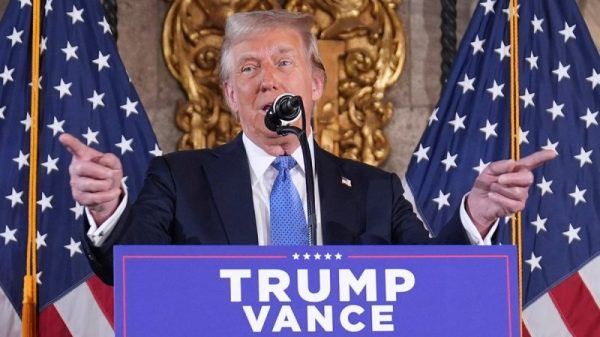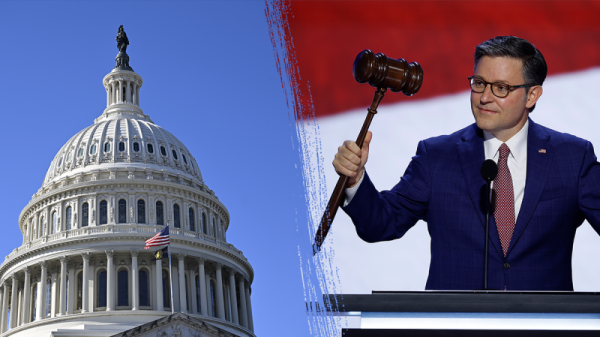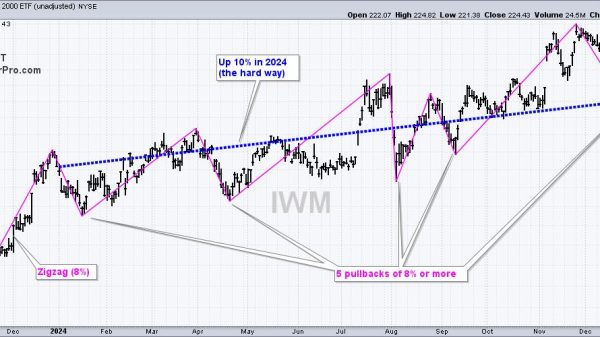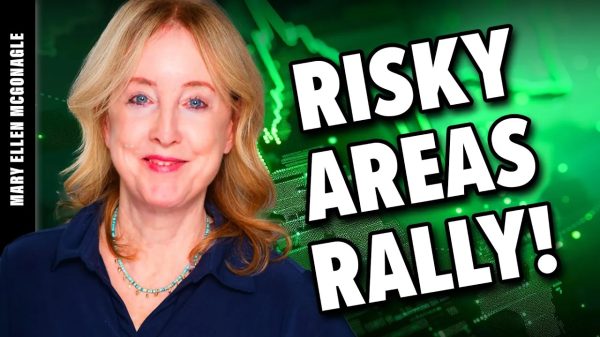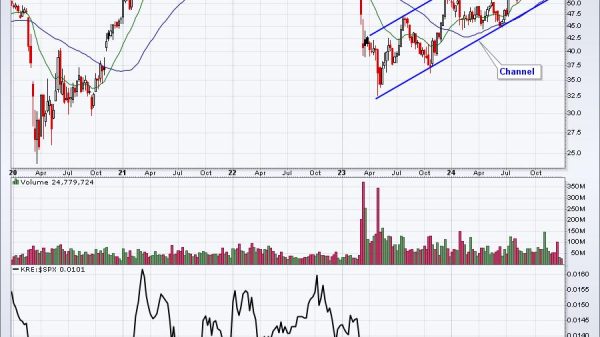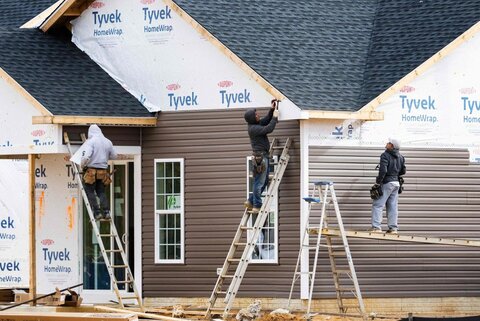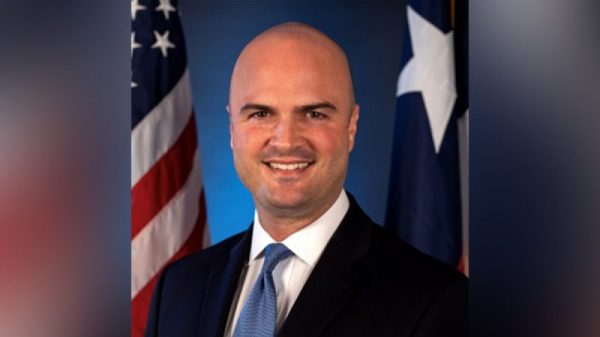Norbert Michel and Jerome Famularo
In the aftermath of the COVID-19 pandemic, the United States experienced a much higher rate of inflation than at any time during the prior few decades. Like the prices of many goods and services, the cost of housing rose rapidly, with the median home price increasing by almost $100,000. (Figure 1.) Unsurprisingly, many potential homebuyers were—and still are —shocked and upset.
As they have in years past, many politicians have latched on to the anger surrounding the recent housing market turmoil. During the presidential debate, Vice President Kamala Harris said, “Here’s the thing: we know that we have a shortage of homes and housing. And the cost of housing is too expensive for far too many people.” Prior to the election, Donald Trump outlined his own solutions, and now federal officials want to implement a host of policies, ranging from subsidies to selling federal land.
But is the United States really facing a housing crisis? Or a shortage of homes? And should Americans really expect recent federal policy proposals to make housing more affordable?
This Cato at Liberty post is the fourth in a series that examines these questions. (Previous posts are here, here, and here.) While the series presents evidence that the United States is not facing a true housing crisis or shortage, nothing in the series suggests that local officials should refrain from relaxing zoning restrictions and other regulations. Elected officials should reduce rules and regulations to make it easier and less costly for people to live. Additionally, federal officials should end the many demand-side policies that place upward pressure on prices across the nation.
Just as important, nothing in the series ignores that many Americans have taken an economic beating these past few years—real wages have fallen, and prices have not reverted to pre-COVID levels. It is no surprise that so many people have been calling for increased government intervention.
As previously, though, if federal officials answer those calls, it will likely increase Americans’ economic burden. Evidence shows that over the long term people have overcome the many federal roadblocks that increase the nominal cost of housing, but affordability would be much improved in the absence of those policies.
Fortunately, federal officials have an excellent opportunity to make it easier for Americans to afford housing because the lessons learned from the post-COVID-19 inflationary episode are directly applicable to the housing market. In both cases, federal policies that distort demand and supply result in harmful outcomes. The housing market is just a microcosm of what can go wrong—and how difficult it can be to fix—when the federal government interferes with markets.
This post begins to investigate whether there is a shortage of new homes, or a scarcity in construction. It explores the importance of demand in housing markets, an often-overlooked subject in the housing affordability debate.
As previous posts in this series have argued, it is difficult to characterize the US housing market as one in crisis. Even though the US population increased by 130 million people during the past five decades, the homeownership rate remained stable outside of the 2008 crisis. In fact, the homeownership rate rose even after prices started spiking in 2019.
It is clearly not the case that the typical American has no place to live, but some members of Congress insist on equating homelessness with problems in the broader housing market. And as a recent exchange with Rep. Maxine Waters (D‑CA) shows (watch from about 1:14:00 to 1:19:00), some members do not care to put homelessness into perspective.
Still, there is an excellent case to be made that homelessness is a serious socioeconomic problem that is much broader than just a housing problem. For instance, in self-reported data collected across 15 states, 75 percent of unsheltered homeless people claimed they had substance abuse problems. These data are consistent with other research and reports by the National Alliance to End Homelessness which show that a disproportionately large share of the homeless population experiences either mental illness or substance abuse problems.
In fact, economists studying homelessness have long incorporated these kinds of factors into their models even while recognizing that “homelessness results from an imbalance between the cost of available housing and a household’s income.” Researchers have noted, for instance, that:
“Investigation of the causes of homelessness must go beyond housing markets alone, however, because of the special characteristics of the population at risk and the public policies that address their needs. Transfer payments and policies regarding institutionalization of the mentally ill, for example, should be important determinants of the incidence of homelessness but are not part of a standard housing model.”
From 2005 to 2024, San Francisco’s homeless population rose from approximately 5,400 people to more than 8,300. Over the same period, city spending (adjusted for inflation to 2024 dollars) on its Homeless Services program went from under $77 million to over $600 million—more than $73,000 per person in 2024 (spending figures from DataSF).
As University of California, Irvine, economist Jan K. Brueckner has pointed out, it is also possible that government regulation makes housing too expensive for some people who would otherwise not be homeless. For example, building codes that prohibit the construction of dormitory-style housing with shared bathrooms and kitchens might make housing too expensive to sufficiently discourage homelessness.
Fortunately, the number of homeless people in the United States trended down from 2007 to 2019, and the number has been a small share of the population for many years. The level did spike after the COVID-19 pandemic, but it is not much higher than it was in 2007, and the rate remains lower—0.195 percent in 2023 compared to 0.215 percent in 2007—even though the total population has increased.
Still, homelessness is a problem, and most efforts to end it have failed. But to the extent that serious health and substance abuse problems are key drivers of homelessness, it is unlikely that a nationwide program of further expanding home mortgages, rent subsidies, and housing trust funds will solve the problem. Yet that policy combination is precisely what some groups promote.
The 2024 Economic Report of the President even blames “affordability constraints” on “persistent market failures in the housing market.” It then justifies both demand-side and supply-side interventions, such as grants and direct subsidies, to fix the alleged market failures.
However, the fact that every person is unable to pay for the housing that they want is not a market failure.
In any market, for any given demand, the only way to ensure such an outcome would be to shift the supply curve so far to the right that the market price drops to effectively zero. Although we make no judgment as to how low the market price for housing or rent should be, the fact that many Americans knowingly move into higher-cost areas of the country makes it worth questioning the need for more government intervention.
Americans Regularly Move to High-Density Areas
While many policymakers argue that the typical American has become steadily more burdened by increasing housing costs, people have been consistently choosing to rent and buy in more densely populated areas. This fact suggests that they can afford to pay higher rent and housing prices. That is, people have a strong preference for certain areas—for myriad reasons—and are willing and able to pay to live in those places, as demonstrated by their actions. At the very least, many Americans are choosing to move into these higher-cost areas.
Many people have moved from higher-cost areas to lower-cost areas, such as from various places in California to Arizona, Florida, Nevada, and Texas. However, most of these people are moving from densely populated areas to other densely populated areas.
As Table 1 shows, between 2000 and 2020, when the US population increased by 18 percent, the number of people living in large metro areas increased by 32 percent. People living in the suburbs of these large metro areas increased by 48 percent, while the number of Americans living in rural areas decreased by 39 percent. (The long-term effects on this pattern from the COVID-19 pandemic on the labor market remain unclear.)
None of this should be too surprising. People tend to move from higher-cost areas to lower-cost areas, but they also tend to move where other people live rather than to the middle of nowhere. They move in this manner because, from their point of view, it allows them to lower their cost of living and improve their quality of life. The federal government should remain neutral in these decisions.
Construction Has Not Evaporated
Still, critics regularly blame a shortage in newly constructed homes for the supposed housing crisis. In fact, this view became conventional wisdom long before the recent spike in home prices. In July 2017, for example, Politico published a story titled “Why Washington Can’t Fix the New Housing Crisis.” The story stated:
“The country is in the grip of a new kind of housing crisis that Washington has virtually no power to solve. The crisis is a shortage of houses. Nationally, the inventory of homes for sale has been shrinking for 24 straight months, stoking bidding wars for even the lowliest fixer-uppers. In January, a measure of supply hit its lowest in history, according to the National Association of Realtors. That scarcity has helped push the homeownership rate to a near 50-year low.”
Oddly enough, when the article was published, the homeownership rate had already rebounded from its post-2008 financial crisis low of 62.9 percent, reached in 2016. It continued to climb, and by the third quarter of 2017 it was up to 63.9 percent. This fact alone is reason to question whether “scarcity” helped push the homeownership rate down.
Given that construction steadily increased from 2011 to 2021 (Figure 2), along with the higher ownership rates and the bidding wars, it is at least plausible that higher demand—for whatever reasons it occurred—helped drive home price increases during the period.
Finally, it is unsurprising that prices would rise as demand increases because housing supply is generally more constrained than demand. It takes time to construct new housing, and many desirable areas are already densely populated. In any given geographic area, new land cannot be produced in the same way that other goods can. Yet, people can get into the market for housing rapidly, despite those supply constraints.
The pandemic price spike provides a clear example: New construction was even more constrained during the pandemic due to supply chain disruptions, and demand was heightened. This combination helps explain the severity of the price spike that followed the pandemic.
Nothing in this post implies that more construction may not be beneficial. Local housing markets experience their own unique dynamics, and there are surely many rules and regulations that could be relaxed to boost construction that would improve local markets. But those decisions are best left to state and local officials, especially because it is so difficult to objectively define a shortage or a surplus.
The government—especially the federal government—should not be in the business of deciding the type and number of homes that people need and want.
The next post in this series examines several specific estimates of the so-called housing shortage.








